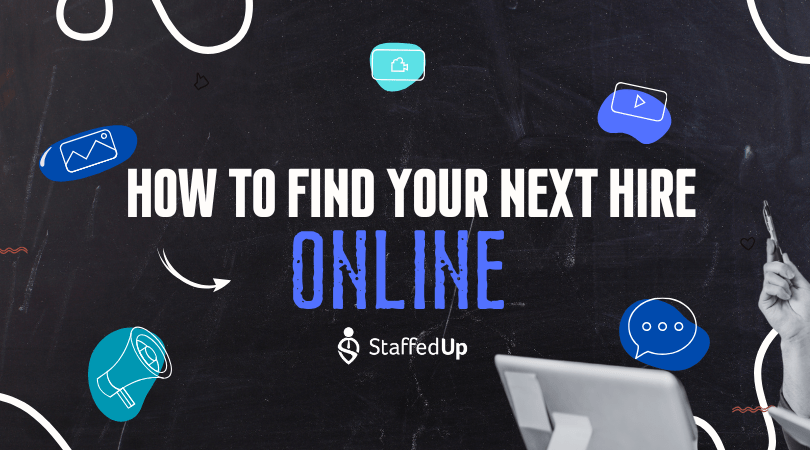Your employer brand is either your greatest recruiting advantage or your biggest liability. In a competitive job market, candidates research companies before applying — and if they don’t like what they see, they’ll move on. A strong employer brand reassures job seekers that your company is a great place to work, while a weak or unclear brand can drive top talent away.
So, how do you ensure your employer brand accurately reflects your company’s values, culture, and opportunities? Technology can help. From AI-driven recruitment marketing to data analytics and employee engagement platforms, the right tools make it easier to attract and retain great talent. Let’s explore the impact of employer branding and the technologies that can help HR build and maintain a strong brand image.
How to Build a Strong Employer Brand With Tech
A strong employer brand isn’t just about looking good online — it has a measurable impact on recruitment. When your employer brand is strong, candidates feel more confident about applying and accepting offers. A transparent, engaging hiring process backed by technology can enhance this confidence and attract the right talent.
1. Create a Strong Applicant Experience From the Beginning
Job seekers expect a smooth, engaging recruitment process. 47% of job seekers say that they have abandoned a recruitment process due to poor communication while a similar percentage of candidates pull out because of issues with recruiters and interviewers. If your hiring process is slow, impersonal, or disorganized, candidates may assume your company culture is the same way.
Technology can help:
- Virtual recruitment tools make hiring more accessible. Companies can use video interviews, AI-driven chatbots, and virtual job fairs to reach a wider talent pool.
- AI-enabled recruitment marketing ensures your employer brand reaches the right candidates. Automated campaigns with targeted messaging highlight your company’s culture and values.
- Omnichannel recruitment strategies engage job seekers where they are: on job boards, LinkedIn, social media, and even email marketing campaigns.
- Personalized candidate journeys improve engagement. AI-driven platforms track a candidate’s behavior and tailor communication, ensuring a seamless and personalized experience.
By making the application process simple and informative, you set the tone for a positive employer brand from the very first interaction.
2. Build an Employer Brand Loop With an ATS
An applicant tracking system (ATS) system isn’t just for tracking applicants — it can also reinforce your employer brand. An ATS allows HR teams to maintain relationships with past applicants, passive candidates, and talent communities, ensuring your company remains top-of-mind.
- Send automated follow-ups to candidates who previously applied.
- Share updates about company culture, new job openings, and employee success stories.
- Use AI-powered insights to identify candidates who are likely to be interested in future roles.
An ATS keeps potential hires engaged, helping build long-term employer brand awareness.
3. Track and Analyze Branding Results to Make Informed Brand Decisions
Employer branding isn’t just about perception, it’s about measurable impact. Companies can use analytics tools to track their reputation and adjust strategies accordingly.
- Social listening tools monitor employer brand sentiment on platforms like LinkedIn, Glassdoor, and Indeed.
- Recruitment analytics platforms track job application trends, drop-off rates, and hiring success rates to identify weak spots in the candidate experience.
- Employee feedback tools (such as pulse surveys and anonymous review platforms) provide insights into what employees love — and don’t love — about working for your company.
By leveraging data, HR teams can make informed decisions that strengthen their employer brand and improve candidate engagement.
4. Use Software to Remove Hiring Bias
A strong employer brand is inclusive and equitable. Candidates want to work for organizations that prioritize diversity, equity, and inclusion (DEI). However, more than a quarter of candidates say that they have experienced bias in an interview. Unconscious bias in hiring can negatively impact an employer’s reputation and limit the talent pool.
AI-driven recruitment software helps reduce bias by:
- Anonymizing candidate information in the early screening stages
- Using structured interviews with consistent, objective scoring criteria
- Analyzing job descriptions to eliminate biased language
Companies that use technology to promote fair hiring practices build a more inclusive reputation, attracting diverse and high-quality candidates.
5. Strengthen Employee Communication to Fuel Brand Transformation
Your employer brand isn’t just shaped by what you say — it’s shaped by what your employees say. Internal communication tools help ensure employees feel engaged, valued, and aligned with your company’s mission. Follow these strategies to build trust and predictability into your processes:
Use a Candidate Relationship Management (CRM) System for Employee Communication
A CRM system can be used internally to maintain strong employee engagement:
- HR can send personalized updates, training opportunities, and company news.
- Automated surveys help gauge employee sentiment.
- AI-powered chatbots provide instant answers to HR-related questions.
Happy employees are more likely to speak positively about your company, strengthening your employer brand organically.
Time Clock Management
Work-life balance is a major factor in employer branding. Time clock management software helps companies promote flexibility and fairness in scheduling, leading to higher job satisfaction.
- Remote and hybrid employees can easily track their hours.
- HR teams can monitor workloads to prevent burnout.
- Automated scheduling ensures fair shift distribution.
Employees who feel their time is respected are more likely to recommend their company to others, improving employer brand reputation.
A Strong Employer Brand Is Essential for Attracting Top Talent — and Technology Is a Powerful Tool in Building and Maintaining It
From AI-driven recruitment marketing to ATS systems, analytics tools, and employee engagement platforms, the right technology helps HR create a seamless candidate experience, remove hiring bias, and keep employees engaged.
By leveraging these tools, companies can strengthen their reputation, attract high-quality candidates, and create a workplace that people are excited to join. Investing in technology isn’t just about streamlining HR processes — it’s about building a brand that inspires confidence in both job seekers and employees.
Author Bio
Dean Mathews is the founder and CEO of OnTheClock, an employee time tracking app that helps over 18,000 companies all around the world track time.
Dean has over 20 years of experience designing and developing business apps. He views software development as a form of art. If the artist creates a masterpiece, many people’s lives are touched and changed for the better.
When he is not perfecting time tracking, Dean enjoys expanding his faith, spending time with family and friends, and finding ways to make the world just a little better. You can connect with him on Linkedin.






